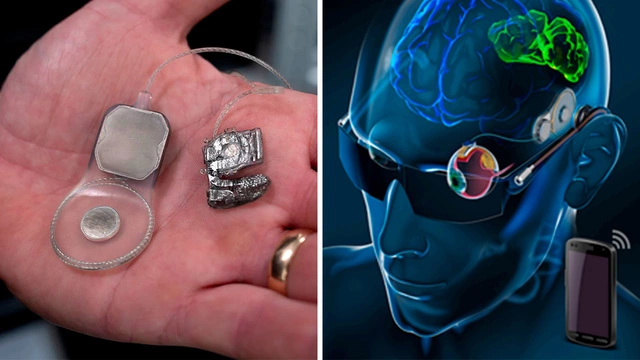Scientists in Australia have created and tested a new miniature bionic eye implant on sheep that offers hope for restoring vision to people with severe degenerative retinal diseases such as retinitis pigmentosa. The study was published in the prestigious journal Science Direct.
 34055
34055
Retinitis pigmentosa is a hereditary disease that leads to retinal dystrophy and, as a consequence, blindness. In the world, one person in 4-5 thousand lives with such a pathology; in Russia there are approximately 40-50 thousand such patients. People with retinitis pigmentosa usually go blind gradually: first, they lose the ability to see in the dark, peripheral vision disappears, and colors fade. It's like a gradually closing window, as if a ring of darkness is slowly closing in front of your eyes.
From a physiological point of view, with retinitis pigmentosa, retinal cells gradually begin to die. There are currently no standard treatments for this pathology. For a long time, patients were advised to take vitamin A, but clinical studies showed that this was useless.
Experimental gene therapy now exists. The first human trials showed relative effectiveness. A man who was completely blind for 40 years was able to see objects again, although his vision was still far from being fully restored.
Another treatment option for people with retinitis pigmentosa is bionic dentures. Thus, in 2017, the first operation to install the Argus II bionic eye prosthesis was performed in Russia. This is a device that looks like sports glasses, but in reality it is a complex system of 60 electrodes that stimulate the retinal cells remaining untouched by the disease. As a result, it is possible to send at least some information to the optic nerve.
“Writing with your nose”, “through your fingers” and other eye exercises
These simple manipulations will take a few minutes of your time and will help maintain healthy vision.
Read the article
“These systems make it possible to see an abstract black and white image in the form of certain configurations of light figures. It resembles a pixel picture, albeit with a very low resolution. But this gives a person social rehabilitation; it will be much easier for him to navigate in space,” the surgeon who was the first in Russia to install such a system on a patient, Hristo Takhchidi, told MedPortal.
The new development of a group of researchers from the University of Sydney and the University of South Wales is incredibly compact. The neuron stimulator itself is installed directly in the eye, and the communication module is implanted behind the ear.
Without glasses, however, it hasn’t happened yet. A miniature camera captures an image, which is then processed and turned into a set of signals. These impulses are transmitted wirelessly through the skin to the communication module, which deciphers the received information and transmits it to the eye stimulator.
“We hope that with this technology, people living with profound vision loss due to degenerative retinal diseases will be able to restore their vision,” said one of the authors of the innovation, Samuel Eggenberger, a biomedical engineer.
The team continues to improve methods of retinal stimulation. The first human trials of the new implant are due to take place soon.
